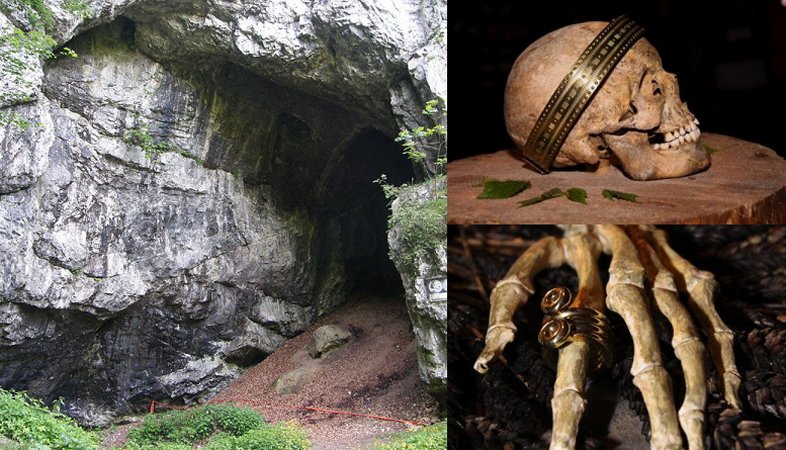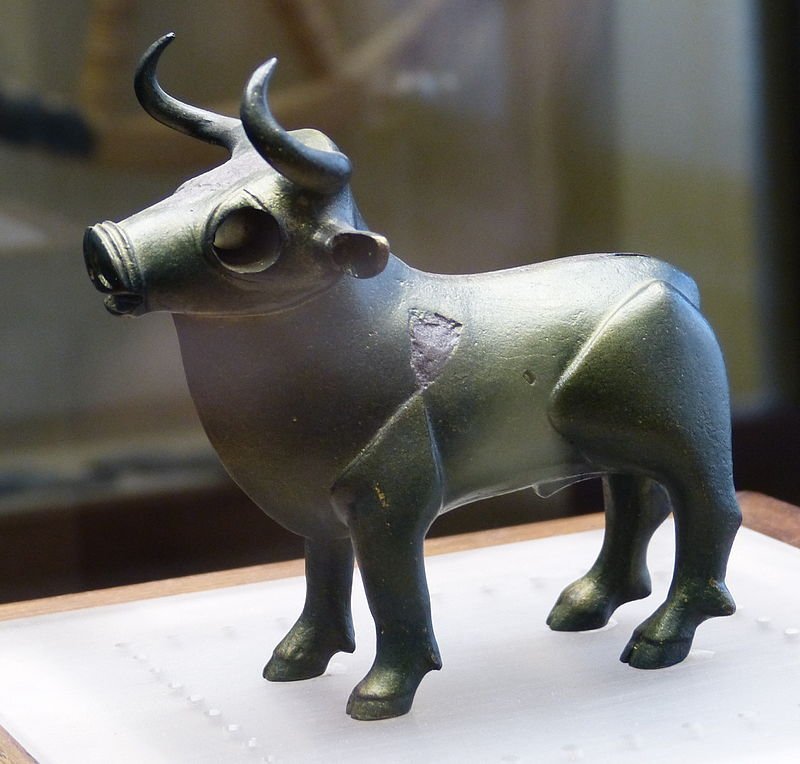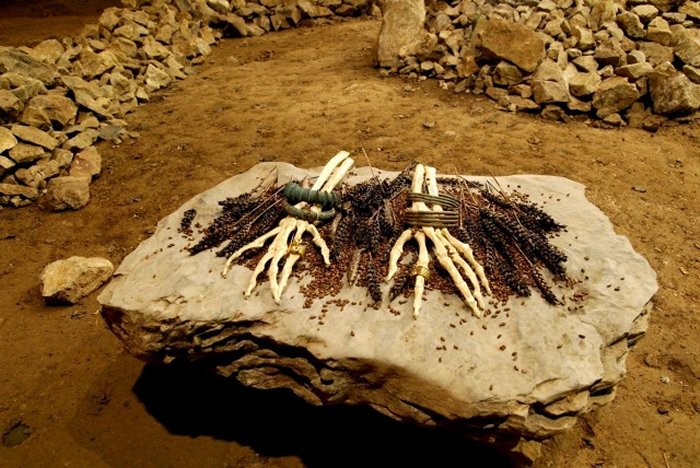Puzzle Of The Bull Rock Cave – Ancient Mass Grave Remains Unexplained
Ellen Lloyd - AncientPages.com - The Bull Rock Cave in Moravia, Czech Republic, is one of Europe's most amazing archaeological sites. The cave has long been known to the locals, but this ancient site was never properly examined.
Recent investigations reveal this mysterious place has a dark history. It was a site where gruesome events occurred, and archaeologists are still uncertain why certain remarkable artifacts and skeletons were hidden in the Bull Rock Cave.
Many traces lead to the Celts, who played a very important role in the history of ancient Europe. However, many of the unearthed artifacts also reveal the presence of people from different parts of the world. The discovery of an ancient mass grave at the site still remains unexplained.
Left: Entrance to the Bull Rock Cave, Credit: Wikipedia - Right-top: 2,600-year-old skull found in the cave, Credit: Prague Post - Right-bottom: Finger-ring, Credit: Prague Post
The Bull Rock Cave (Býcí skála Cave) has been home to many people during different epochs. Modern archaeologists have established that the Bull Rock Cave was occupied during the Palaeolithic, Eneolithic, Hallstatt, La Têne, and Medieval periods, but only for short periods.
Between 1867-1873, archaeologist Jindřich Wankel examined the cave and found evidence of a Palaeolithic settlement from around 100,000 - 10,000 B.C.
Famous Hallstatt culture bronze statue of a bull found in the Bull Rock cave. Credit: Wikipedia
In 1872, Wankel announced an incredible archaeological discovery. Two young boys had found a bronze Celtic bull statue dated to ca. 560 B.C. Wankel and his scientists also found animal and material offerings, crops, textiles, ceramic and sheet-metal vessels, jewelry, glass, and amber beads inside the Bull Rock Cave.
Gruesome Discovery Inside The Bull Rock Cave
The next discovery was less pleasant. Wankel said skeletons of one man and forty young women were unearthed inside the cave. Some women were beheaded, and some were missing legs or hands. One of the skulls had been placed in a bucket. On a small stone altar adorned with stalks of grain lay two arms with bracelets and gold rings, next to which was a skull that was spliced in half.
On a small altar, severed hands were placed. Credit: Balkan Celts
Deeper inside the cave, archaeologists found remains of a chariot with bronze fittings and the skeleton of a man. At the cave entrance was a Celtic Iron Age metal workshop and tools.
Who were these people, and why had they died inside the Bull Rock Cave? Wankel thought that he had discovered a Celtic chieftain’s burial. He assumed that all the artifacts had been offerings and the horse and young women had been sacrificed.
Will Scientists Finally Unravel The Secrets Of The Bull Rock Cave?
Later investigations revealed Wankel’s theory was not entirely correct. Researchers determined that not all of the skeletons belonged to women. Most of the victims were male and women between 30-60 years old. The remains of children were also identified. It was also unclear whether the victims had been sacrificed or murdered. Many of the artifacts discovered at the site come from all over Europe. Researchers found amber from the Baltic, bronze belts typical of northern Italy, and iron weapons from the Caucasus. This is a problem because archaeologists do not know the people's identities in the cave.
There are many theories attempting to explain what happened at the site. Some suggest the Bull Rock Cave was home to an ancient cult and a place of sacrifice. Others have put forward theories promoting ancestral warfare, the extermination of a cult site, or the assassination and slaughter of merchants. All of these theories remain speculative until new evidence is found.
Currently, the Bull Rock Cave still remains an unsolved ancient European mystery.
It should also not be forgotten that the cave contains a Neolithic picture. It is the oldest cave painting known in the Czech Republic. It depicts a geometrical shape resembling a grill with a size of 30x40 cm, painted in charcoal on the cave wall.
During World War II, the Nazis built an underground factory in the cave, damaging the entrance area. After the war, a few more caves were discovered. Further excavations of the cave can shed more light on the history of this place.
Exploring the mysterious cave on your own is not allowed. Except for the entrance, the cave is not accessible to the public, although occasionally, it is open to visitors. Several of the artifacts discovered in the Bull Rock Cave are stored in the Natural History in Vienna, Austria.
There are many interesting caves in Europe. Another place of great interest is the Ciemna Cave which we discussed earlier on Ancient Pages. The Ciemna Cave in Poland was inhabited by humans as far back as 120,000 years ago.
Updated on January 4, 2023
Written by - Ellen Lloyd AncientPages.com
Copyright © AncientPages.com All rights reserved. This material may not be published, broadcast, rewritten or redistributed in whole or part without the express written permission of AncientPages.com
Expand for referencesMore From Ancient Pages
-
 Controversial Prehistoric Bronze Gears Of Peru
Artifacts | Aug 15, 2015
Controversial Prehistoric Bronze Gears Of Peru
Artifacts | Aug 15, 2015 -
 Enigma Of Étienne Le Ray – Unusual Vagabond Prophet Nicknamed Nostradamus Of Brittany
Featured Stories | Sep 28, 2020
Enigma Of Étienne Le Ray – Unusual Vagabond Prophet Nicknamed Nostradamus Of Brittany
Featured Stories | Sep 28, 2020 -
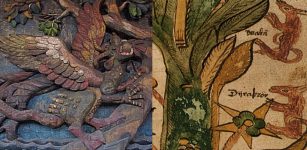 Magical And Malicious Creatures That Prey Upon Yggdrasil In Norse Beliefs
Featured Stories | Dec 6, 2019
Magical And Malicious Creatures That Prey Upon Yggdrasil In Norse Beliefs
Featured Stories | Dec 6, 2019 -
 Pooka: Solitary Spirit And Not Entirely Benevolent Prankster In Irish Folklore
Celtic Mythology | Jun 4, 2016
Pooka: Solitary Spirit And Not Entirely Benevolent Prankster In Irish Folklore
Celtic Mythology | Jun 4, 2016 -
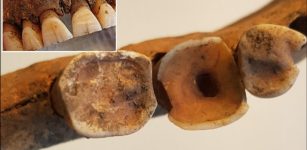 Viking Dentistry Was Surprisingly Advanced And Not Unlike Today’s Treatments
Archaeology | Dec 14, 2023
Viking Dentistry Was Surprisingly Advanced And Not Unlike Today’s Treatments
Archaeology | Dec 14, 2023 -
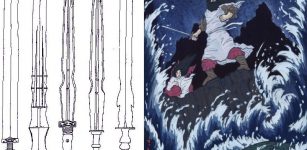 Sacred Regalia Of Japanese Emperor: Sword, Mirror And Jewel In Ancient Japanese Tradition
Artifacts | Sep 2, 2017
Sacred Regalia Of Japanese Emperor: Sword, Mirror And Jewel In Ancient Japanese Tradition
Artifacts | Sep 2, 2017 -
 Long-Lost Burial Site Of Viking King Harald Bluetooth Discovered By Satellites?
Archaeology | Jun 29, 2022
Long-Lost Burial Site Of Viking King Harald Bluetooth Discovered By Satellites?
Archaeology | Jun 29, 2022 -
 Airmid: Irish Goddess Of Healing And Herbs And One Of The Tuatha Dé Danann
Celtic Mythology | Feb 2, 2018
Airmid: Irish Goddess Of Healing And Herbs And One Of The Tuatha Dé Danann
Celtic Mythology | Feb 2, 2018 -
 God Dagda – A Powerful Leader Of The Tuatha De Danann In Celtic Mythology
Celtic Mythology | May 30, 2020
God Dagda – A Powerful Leader Of The Tuatha De Danann In Celtic Mythology
Celtic Mythology | May 30, 2020 -
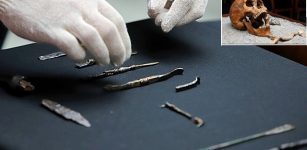 A 2,000-Year-Old Tomb Of A Roman Physician And His Medical Instruments Found In Hungary
Archaeology | May 2, 2023
A 2,000-Year-Old Tomb Of A Roman Physician And His Medical Instruments Found In Hungary
Archaeology | May 2, 2023 -
 Biblical Cherubim – Sweet Angels Or Dangerous Creatures With A Hidden Agenda?
Biblical Mysteries | Jun 9, 2018
Biblical Cherubim – Sweet Angels Or Dangerous Creatures With A Hidden Agenda?
Biblical Mysteries | Jun 9, 2018 -
 Evidence Of Ancient Lakes In The Sahara Desert Discovered
Archaeology | Nov 5, 2022
Evidence Of Ancient Lakes In The Sahara Desert Discovered
Archaeology | Nov 5, 2022 -
 Unique Historical Discovery – Wreck Of Vasa’s Sister Ship Äpplet Found Off Swedish Coast!
Archaeology | Oct 25, 2022
Unique Historical Discovery – Wreck Of Vasa’s Sister Ship Äpplet Found Off Swedish Coast!
Archaeology | Oct 25, 2022 -
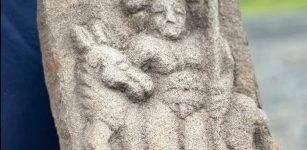 Carved Stone Depicting Mystery Horseman Unearthed At Roman Vindolanda, Hadrian’s Wall
Archaeology | Jul 1, 2021
Carved Stone Depicting Mystery Horseman Unearthed At Roman Vindolanda, Hadrian’s Wall
Archaeology | Jul 1, 2021 -
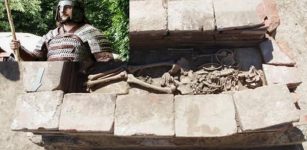 Rare Discovery: Remains Of An Avar Warrior And A Belt Unearthed In Vinkovci, Croatia
Archaeology | May 3, 2020
Rare Discovery: Remains Of An Avar Warrior And A Belt Unearthed In Vinkovci, Croatia
Archaeology | May 3, 2020 -
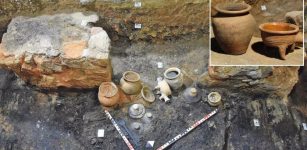 Uniquely Well-Preserved Medieval Kitchen Unearthed North of Moravia
Archaeology | Aug 11, 2022
Uniquely Well-Preserved Medieval Kitchen Unearthed North of Moravia
Archaeology | Aug 11, 2022 -
 Count Dracula: His Letters Helped Researchers Cast New Light On Health Of Legendary Figure
Historical Figures | Aug 17, 2023
Count Dracula: His Letters Helped Researchers Cast New Light On Health Of Legendary Figure
Historical Figures | Aug 17, 2023 -
 Underground Ancient City Of Kish And Its Advanced Hydraulics System
Ancient Technology | Aug 28, 2015
Underground Ancient City Of Kish And Its Advanced Hydraulics System
Ancient Technology | Aug 28, 2015 -
 Three Judges Of Souls Await You On Chinvat Bridge – Gateway To Unknown Realms In Zoroastrian Beliefs
Featured Stories | Aug 11, 2021
Three Judges Of Souls Await You On Chinvat Bridge – Gateway To Unknown Realms In Zoroastrian Beliefs
Featured Stories | Aug 11, 2021 -
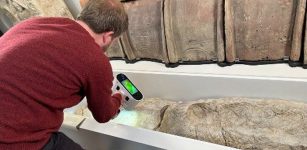 3D Scans Used To Study Mysterious Roman Burial Practice
Archaeology | Jun 5, 2023
3D Scans Used To Study Mysterious Roman Burial Practice
Archaeology | Jun 5, 2023

